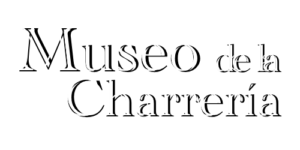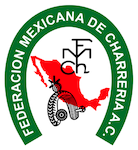20th CENTURY
Evolution of Charrería Throughout Mexican History
During the 20th CenturyDuring the twentieth century, charrería developed its greatest splendor in the highlands, and in all the large haciendas, during certain times of the year, the horses' shoeing, gelding or capadero and tusadero were carried out. Such work was the occasion for great festivities, and both the owners and the cowboys enjoyed themselves while doing it.
The art of "Charreria" was already known in Europe and the United States since the beginning of the last century, due to the exhibitions of the "charros". Ponciano Díaz González gave the first performances in 1888. He was the first Mexican to perform in the Spanish arenas, bullfights and "corridas de toro y reata", wearing with great distinction the "charro" costumes.
The peasants used to chase the animals that were not marked. They had to unsaddle the horses, leaving only the bridles, then they would tie themselves to the waist and fasten on the horse, which would approach the wild herds. Then, selecting the animals they liked, they jumped on them by grabbing the manes, and rode them until they were tamed. This was the origin of "El Paso de la Muerte" and other acts.
The first "Manganas floreadas" were created by Don Felipe and Don Ignacio González. They called these acts: "La Crinolina", "la contra crinolina" and "la caricia". Thus, it became the true art, the handling of the reata.
The "charros" formed a true rural aristocracy with a strong sense of Mexico. The landowners alternated, fraternally, with their cowboys and peons, performing the most daring activities. Thus, they were the brave, tough and honest men who formed the heart of the Mexican people.
THE MEXICAN REVOLUTION
Later, in the revolution, Francisco I. Madero, a rich landowner from Coahuila, with democratic ideas, whose motto was: 'Effective Suffrage not Reelection', incited the people to overthrow the dictator Porfirio Diaz. He assumed power after the 1910 revolution, which spread across the northern plains and the southern countryside. At the gallop of the horse, the most important encounters featured the action of the centaurs. In 1911, with the march of Madero, the century of revolutions began, with wide hats and a cartridge cross on the chest. At the height of the revolution, Francisco Villa spent most of his time on horseback, which is why he was called 'El Centauro del Norte' (The Centaur of the North). Emiliano Zapata, considered the best horse tamer in the region, wore the characteristic attire of the country people of the south of the republic, the charro suit. He was the only leader of the revolution who knew from the beginning what his goal was: restitution of the land to its original owners. To the already famous names of Villa and Zapata, many more were added who were characterized by their reckless courage. Once the armed stage was over, came the stage of law; constitutionalism triumphed and the revolution, when it became a government, thought that the most important part of the wealth of the Homeland is man.
POST-REVOLUTION
With the disappearance of the haciendas in the Mexican province, although to a lesser extent, they continued to carry out the rural tasks with what was left of the cattle; but for those who went to the city, only the memory of those old hacienda times remained. As the years went by, these people wanted to revive the customs that were so deeply rooted in them. Charreria became a sport when the charros, aware of their value as depositaries of the equestrian tradition of the countryside, organized themselves to emulate the tasks of which our sport is a part, within the cities. The country charro chores, very much ours and very Mexican, are a sensitive part of our spirit, born of the painful birth, product of the union of two races: Indian-aborigine and Spanish, giving way to the mestizo, a tough, suffering man with a serious and impetuous personality, serene and worthy representative of our countryside, who fights with courage in the desert, laughs and falls in love with a woman, or kneels and kisses his mother's hand. He loves the jungle, the plain, the desert, the sky, the wind, the rain and his country soul, the soul of the charro, carries the haughtiness of our mountains. In the countryside the charrería was formed, Mexico was formed and our history was written.
CHARRERÍA AS A SPORT
Therefore, it should be clear that the Charrería was born in the countryside and was regulated in the city, emerging the first association in Mexico City, with the name of "La Nacional" on June 4, 1921. Subsequently, on April 29, 1923, the second association of the Republic with the name of "Club Nacional de Charros Potosinos", now Potosina de Charros in the state capital of San Luis Potosi and, on August 8, 1923, in Toluca, State of Mexico, the third association of charros in the State of Mexico.
Charreria was declared "National Sport" by Mr. Manuel Avila Camacho, President of Mexico, and September 14 was instituted as "Charro's Day".
On December 16, 1933, the National Federation of Charros was founded, which undertook the double and fruitful task of bringing together all the country's charros associations to organize competitions and develop common regulations that would unify criteria in the practice of this national sport. national sport.
SEMI-PROFESSIONALIZATION AND HIGH PERFORMANCE
The 80's saw the beginning of the high performance boom, controversial due to the semi-professionalization issue, but largely accepted for the development and growth of the sport turned into an art form. Prior to this time, the teams were mainly composed of family members who, in addition to their agricultural activities, met to compete in charrear with other families. This semi-professionalization led to the development of high performance athletes, whose main activity was precisely this sport.
Today, more charros have academic degrees that they have achieved through hard work, which has implied a higher level of sportsmanship because the new generations have brought it about.
The charrería is living the present in all the extension of the word, gaining new followers, getting more and more sponsors, while the level of sport continues to grow and that, thanks to the high sporting performance that is printed in each competition, throughout the country, as well as Allende las Fronteras.



